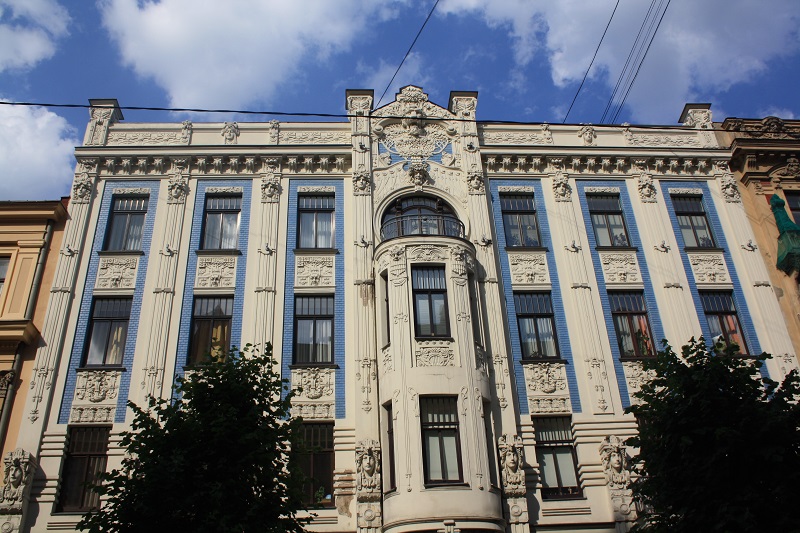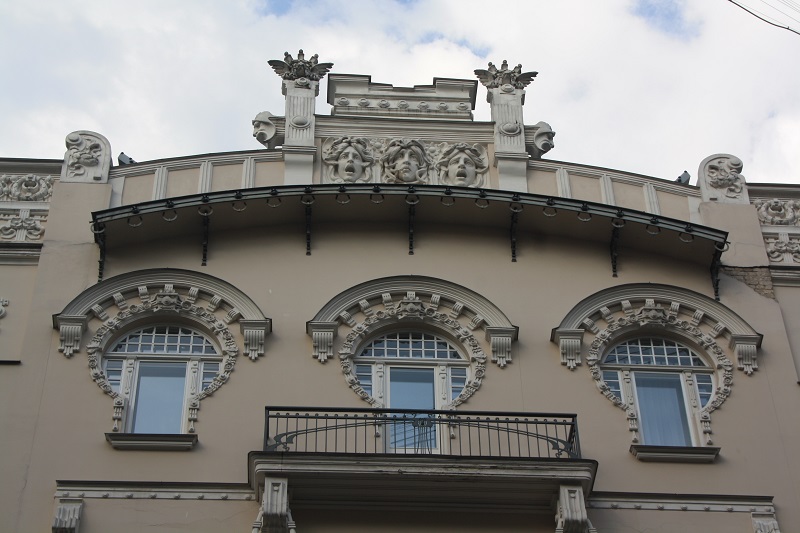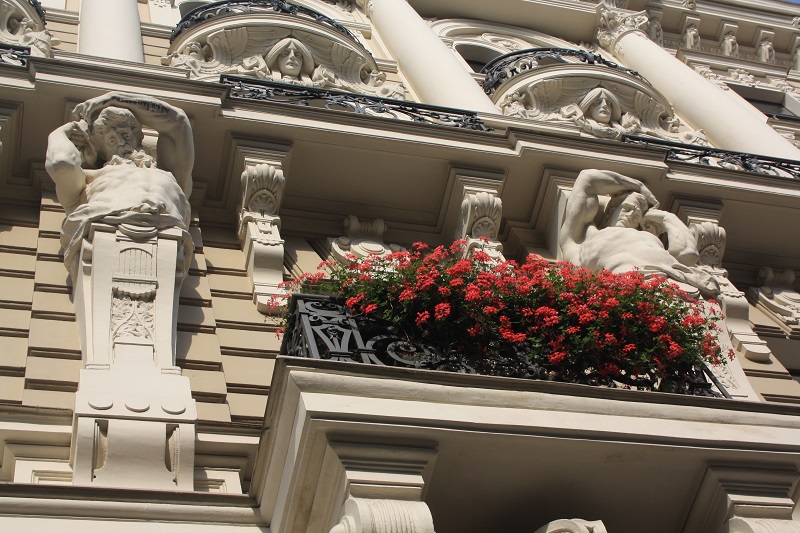Jugendstil architecture
Jugendstil is a type of Art Nouveau architecture that emerged in the late-19th and early-20th centuries.
The aim of Art Nouveau was to escape the eclectic historical styles that had come to dominate the late-19th century and so modernise design. Inspiration was drawn from both organic and geometric forms, merging flowing, natural designs with more angular and rigid contours.
As the Art Nouveau movement spread through Europe it evolved in different forms in different countries – Style Moderne in France, Secession Style in Austria, and Jugendstil in Germany.
The Latvian capital of Riga is the most celebrated Jugendstil city in the world, with a large concentration of buildings designed in the style – roughly one-third of all the buildings in the city centre. The reason the style is so prevalent is that at the height of the Art Nouveau period, Riga was experiencing a financial boom. At the same time, restrictions were lifted on the construction of masonry buildings outside the Old City fortified walls. Accordingly, most of Riga’s Jugendstil buildings date from between 1904 and 1914.
One of the most prolific and revered Jugendstil architects was Mikhail Eisenstein, who is particularly well known for his highly-ornamental three-storey apartment buildings on Alberta iela. One example features a massive woman’s face, a screaming woman, a satyr, and large busts of Lady Liberty.
On other buildings, entrances are guarded by sphinx, and windows are shaped like large keyholes. At the corner or Elizabetes and Antonijas streets, one of the city’s most famous buildings features a blue façade with long faces at the top (see below).
[edit] Find out more
[edit] Related articles on Designing Buildings Wiki
Featured articles and news
RTPI leader to become new CIOB Chief Executive Officer
Dr Victoria Hills MRTPI, FICE to take over after Caroline Gumble’s departure.
Social and affordable housing, a long term plan for delivery
The “Delivering a Decade of Renewal for Social and Affordable Housing” strategy sets out future path.
A change to adoptive architecture
Effects of global weather warming on architectural detailing, material choice and human interaction.
The proposed publicly owned and backed subsidiary of Homes England, to facilitate new homes.
How big is the problem and what can we do to mitigate the effects?
Overheating guidance and tools for building designers
A number of cool guides to help with the heat.
The UK's Modern Industrial Strategy: A 10 year plan
Previous consultation criticism, current key elements and general support with some persisting reservations.
Building Safety Regulator reforms
New roles, new staff and a new fast track service pave the way for a single construction regulator.
Architectural Technologist CPDs and Communications
CIAT CPD… and how you can do it!
Cooling centres and cool spaces
Managing extreme heat in cities by directing the public to places for heat stress relief and water sources.
Winter gardens: A brief history and warm variations
Extending the season with glass in different forms and terms.
Restoring Great Yarmouth's Winter Gardens
Transforming one of the least sustainable constructions imaginable.
Construction Skills Mission Board launch sector drive
Newly formed government and industry collaboration set strategy for recruiting an additional 100,000 construction workers a year.
New Architects Code comes into effect in September 2025
ARB Architects Code of Conduct and Practice available with ongoing consultation regarding guidance.
Welsh Skills Body (Medr) launches ambitious plan
The new skills body brings together funding and regulation of tertiary education and research for the devolved nation.
Paul Gandy FCIOB announced as next CIOB President
Former Tilbury Douglas CEO takes helm.
UK Infrastructure: A 10 Year Strategy. In brief with reactions
With the National Infrastructure and Service Transformation Authority (NISTA).



























